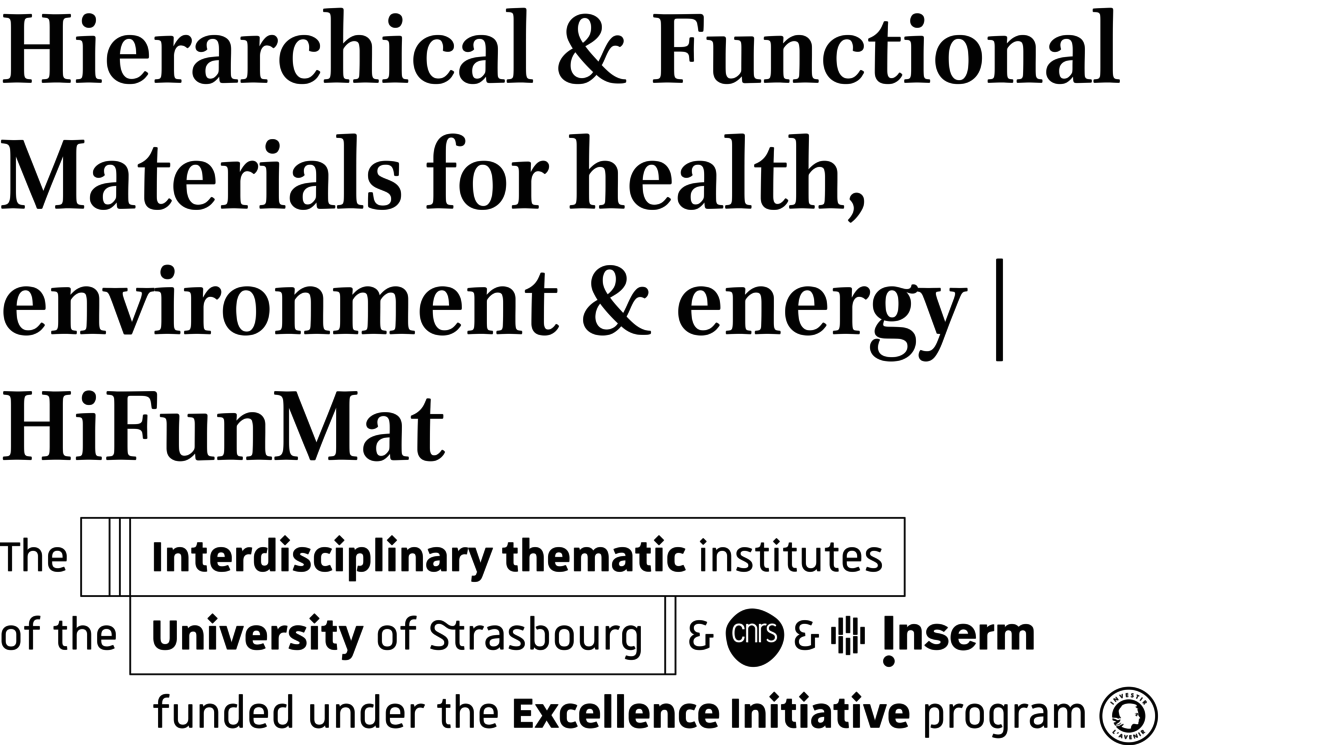Summary
Launched in 2021, the Interdisciplinary Thematic Institutes (ITI) build on the Research University Schools (EUR) and Laboratories of Excellence (Labex). These structures aim to strengthen the links between research and education. Several ITIs are tied to the programs offered by the Faculty of Physics and Engineering and the research labs in the Strasbourg area. Through scholarship programs designed to attract top candidates, including international students, enhanced academic pathways, and access to cutting-edge instrumental platforms, the ITIs support the faculty's programs.
Quantum Sciences and Nanomaterials | QMat

Regrouper le potentiel interdisciplinaire dans le domaine des nanosciences et des nanomatériaux avec des applications du monde réel sur les propriétés quantiques et les technologies de l’information.
Ambitions
QMat répond à une demande émergente et globale de recherche de pointe et d’enseignements dans les domaines des sciences quantiques et de la nanotechnologie.
Chacun de ses membres partage la même vision scientifique : permettre la transition, critique, des sciences quantiques fondamentales vers l’innovation, visant des applications dans le monde actuel. L’approche de QMat repose sur trois axes :
- Explorer les phénomènes de cohérence quantique – permettant une meilleure compréhension fondamentale de propriétés de la matière aux petites échelles,
- Exploiter les symétries issues de systèmes de dimensions réduites,
- Combiner les propriétés de nano-systèmes – évoluant des propriétés aux fonctions, dans le but de développer de nouveaux matériaux intelligents et dispositifs.
QMat brings together interdisciplinary expertise in nanosciences and nanomaterials, with real-world applications focused on quantum properties and information technologies.
Goals
QMat addresses an emerging global demand for cutting-edge research and education in quantum sciences and nanotechnology. All its members share the same scientific vision: enabling the critical transition from fundamental quantum sciences to innovation, aiming for applications in today's world. QMat’s approach is based on three key areas:
- Exploring quantum coherence phenomena to gain a better fundamental understanding of matter's properties at small scales,
- Exploiting symmetries derived from reduced-dimensional systems,
- Combining the properties of nanosystems, moving from properties to functions, with the goal of developing new smart materials and devices.
Research Themes and Challenges
QMat operates at the interfaces of physics, chemistry, materials science, and life sciences.
For more information: qmat.unistra.fr
Coordinator : Mathieu Bailleuil
Institut de physique et chimie des matériaux de Strasbourg | IPCMS
Hierarchical and Functional Materials for Health, Environment, and Energy | HiFunMat

In response to societal challenges, the research, engineering, and technical staff of ITI HiFunMat focus on the design, characterization, and production of hierarchical and functional multi-composite materials with nanometric precision for applications in energy, environment, and health.
Educational Goals HiFunMat offers complementary interdisciplinary training for Master's and PhD students, covering both scientific and practical cross-disciplinary courses (chemistry, physics, and materials science). Students will gain familiarity with all aspects of innovation and value creation, including both technical lab skills and general "soft" skills.
The aim is to train a new generation of high-level young researchers in materials science to meet the strong demand from academia and industry.
Research Themes and Challenges Combining fundamental knowledge from chemistry, physics, and biology, HiFunMat develops and characterizes new composite materials with outstanding properties and applications in health, environment, and energy. Research focuses on five main areas:
- Designing and synthesizing basic molecular building blocks, developing new organic synthesis strategies while prioritizing eco-friendly processes and raw materials.
- Preparing materials with fine surface control to i) ensure 3D assembly with temporal precision through interactions between the blocks and the surface, and ii) achieve properties that adapt to their environments.
- Developing multifunctional hierarchical materials with precise structural control at various scales by assembling (macro)molecules, (nano)particles, droplets, etc., through innovative approaches (3D printing, microfluidics, foams, or multi-step assemblies).
- Creating new strategies to characterize, shape, or modify materials by exposing them to various types and energies of radiation (photons, accelerated electrons, or ions) to produce original properties.
- Designing new biomimetic materials inspired by living systems that are biodegradable, active, self-healing, adaptable, and life-like.
For more information: hifunmat.unistra.fr
Coordinator : Fouzia Boulmedais
Institut Charles Sadron | ICS (CNRS)
Mathematics, Interactions, and Applications | IRMIA++

RMIA++ combines advanced research in mathematics, computer science, modeling, simulation, and data science with applications in academic research and the socio-economic world.
Goals
The ITI IRMIA++ integrates a research center and a Master's-PhD training program, supported by 12 research teams and several Master's tracks. It brings together all the mathematicians at the University of Strasbourg, along with partners in computer science and physics. IRMIA++ is based on the internationally renowned mathematical research conducted in Strasbourg and its connections with the socio-economic environment.
It promotes interdisciplinary academic collaborations (health, plasma physics, intense magnetic fields, etc.) and industrial partnerships. The core mission of IRMIA++ is to offer high-level research training through several five-year Master’s-PhD tracks, with joint initiatives aimed at fostering interdisciplinary culture through specialized courses, seminars, and research projects focusing on mathematics and its interactions.
Research Themes and Challenges
- Promote high-level research and international collaborations, creating spaces and events for exchanges between scientists from diverse fields centered around mathematics and its applications.
- Develop mathematical theory and numerical simulation methods necessary for applications, such as plasma physics, quantum mechanics, fluid mechanics, cavitation, biological tissue modeling, data analysis in biology and medicine, and natural phenomena where computational representation evolves dynamically in synergy with physics.
- Create advanced software techniques for scientific applications, particularly: parallelization of scientific code, rapid prototyping of physical models, program specification and verification, managing large data sets, and handling vast astrophysical surveys.
- Address mathematical and computational challenges in data science, especially in the scientific visualization of massive data from physical simulations or biomedical acquisitions.
- Promote knowledge transfer to industry and foster new interdisciplinary academic collaborations.
- Encourage the dissemination and popularization of mathematics, computer science, and mathematical physics.
For more information: irmiapp.unistra.fr
Coordinator: Nalini Anantharaman
Contact : iti-irmiapp[at]unistra.fr 03 68 85 01 49
7 rue René-Descartes - 67084 Strasbourg Cedex